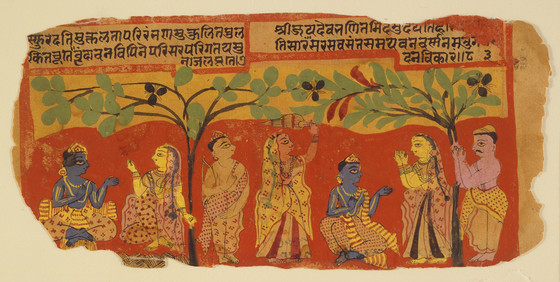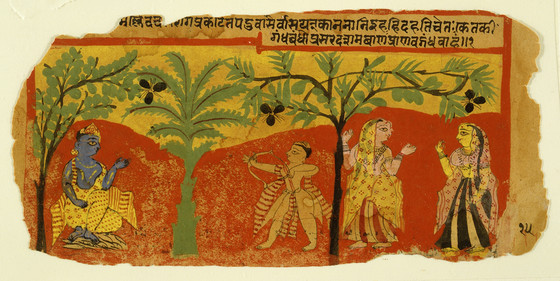Krishna and Gopis (recto), Kamadeva, God of Desire, Shooting an Arrow at Krishna (verso); Folio from a Gita Govinda (Song of the Cowherd)


Please log in to add this item to your gallery.
View comments
No comments have been posted yet.
Add a comment
Please log in to add comments.
Please log in to add tags.
* Nearly 20,000 images of artworks the museum believes to be in the public domain are available to download on this site.
Other images may be protected by copyright and other intellectual property rights.
By using any of these images you agree to LACMA's Terms of Use.
Krishna and Gopis (recto), Kamadeva, God of Desire, Shooting an Arrow at Krishna (verso); Folio from a Gita Govinda (Song of the Cowherd)
Drawings; watercolors
Opaque watercolor and ink on paper
Image: 4 x 8 5/8 in. (10.16 x 21.91 cm); Sheet: 4 5/8 x 9 3/4 in. (11.75 x 24.77 cm)
Gift of Ramesh and Urmil Kapoor (M.88.225a-b)
Not currently on public view


